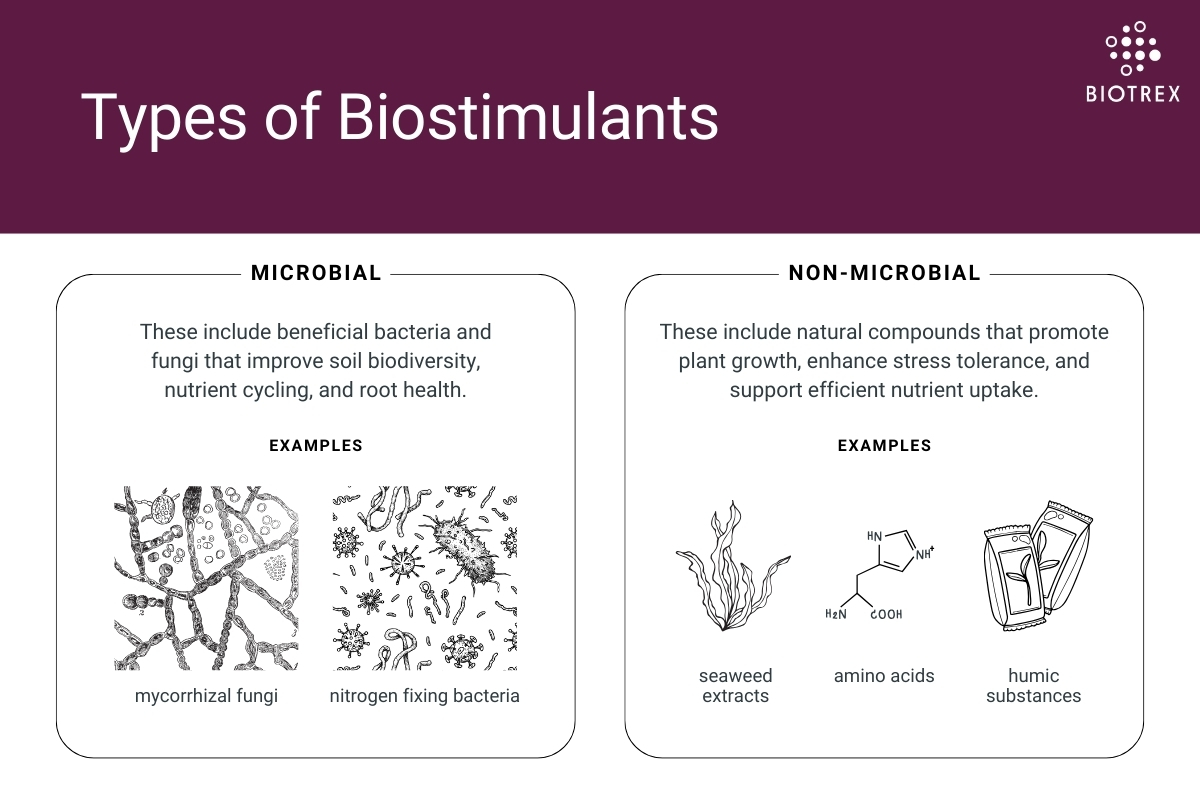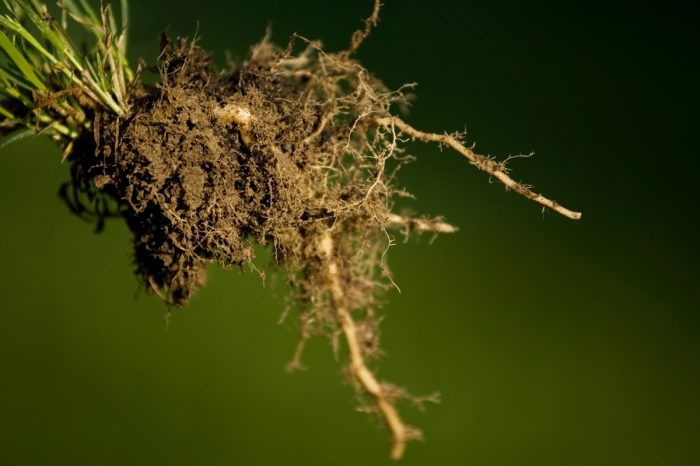New era of agriculture
Modern agriculture faces a dual challenge. It must produce enough food to meet global demand while ensuring environmental sustainability. Farmers around the world are dealing with the unpredictable effects of climate change – drought, extreme temperatures, and flooding – all of which threaten yield stability and profitability. In this era of uncertainty, solutions that increase crop resilience and productivity without harming the environment are critical.
Mineral fertilisers have long played a vital role in agriculture, providing essential nutrients to support plant growth and ensure high yields. However, over-reliance on mineral fertilisers comes at a cost to the soil and surrounding ecosystems. As agriculture evolves, it is now clear that mineral fertilisers alone are not enough to sustain long-term agricultural productivity. This has led to a growing interest in biostimulants as an innovative solution.
what are plant biostimulants?
Plant biostimulants enhance natural processes in plants, soil and microbial communities.
They improve productivity, not necessarily through direct nutrient delivery. Biostimulants can contain compounds like amino acids, which plants can directly use for growth or metabolism. However, their primary role isn’t to act as a nutrient source like mineral fertilisers. Instead, biostimulants work by stimulating plant processes to improve nutrient utilisation and resilience to stress.
Additionally, biostimulants play a pivotal role in improving the activity and diversity of soil microbial communities. By fostering beneficial microbes, they enhance nutrient cycling, organic matter decomposition, and overall soil biodiversity, creating a healthier and more resilient soil ecosystem.

Biostimulants fall into two primary categories
Microbial Biostimulants: These include beneficial bacteria and fungi that improve soil biodiversity, nutrient cycling, and root health. Examples include mycorrhizal fungi and nitrogen fixing bacteria (Azotobacter spp., Rhizobium spp., Azospirillum spp.). Non-Microbial Biostimulants: These include natural compounds such as seaweed extracts, humic acids, and amino acids. They promote plant growth, enhance stress tolerance, and support efficient nutrient uptake.
potential of biostimulants
Biostimulants have the potential to offer a wide range of benefits to the agriculture.
By stimulating plants development and microbial activity, they enable plants to utilise available nutrients more efficiently, reducing the need for excessive chemical inputs.
They also enhance a plant’s ability to withstand environmental stressors such as drought, extreme temperatures, and salinity, leading to more stable yields in challenging conditions.
Beyond the immediate benefits to plants, biostimulants play a crucial role in supporting soil health and microbial community. Biostimulants, such as humic acids, contribute to building soil organic matter, improving soil structure, and fostering a diverse microbial community. This dynamic microbial ecosystem drives critical soil processes such as nutrient cycling, organic matter break down, and pathogen suppression, creating a resilient and fertile soil ecosystems.
While these benefits are promising, it’s important to approach biostimulants with realistic expectations. Their effectiveness depends on environmental factors, soil conditions, and application methods. They are not a universal solution, and their performance can vary widely across different regions and farming systems.
challenges and risks
Despite their potential, biostimulants face 3 significant challenges.
- Product standardisation is a concern. Many biostimulants, such as plant extracts or microbial inoculants, vary in composition from batch to batch. Without consistent formulations, growers may experience unreliable results, which complicates adoption and erodes trust in these products.
- Biostimulant performance can be inconsistent under real-world conditions. Factors like soil type, pH, organic matter, salinity, and temperature can influence their effectiveness. A product that excels in controlled trials may underperform in certain field settings, creating uncertainty for farmers.
- The long-term effects of biostimulants on soil ecosystems remain underexplored. Overuse or improper application could potentially disrupt microbial balances, leading to unintended consequences.
Research, innovation and practical field trials are essential to address these issues and prove the potential of biostimulants.
WHY BIOTREX SOIL MICROBIAL TESTING IS ESSENTIAL
Just as chemical testing is crucial for deciding the dosage and ensuring the efficacy of mineral fertilisers, soil microbial testing is vital for optimising biostimulant performance.
BIOTREX Soil Microbial Analysis is an essential tool for understanding how biostimulants interact with the soil’s microbial community. It provides valuable insights into the activity, diversity, and balance of soil microbes, enabling biostimulant producers to refine their formulations. One of the key advantages of BIOTREX is its versatility – it can be performed on any soil type, making it a great solution for testing products in real-world trials across different environmental conditions and soil types.
The analysis provides three key microbial indicators, offering a comprehensive view of the microbial community’s behavior. These results not only help develop protocols tailored to specific farming conditions but also can be used as a cost-effective screening method before more detailed eDNA based analysis in the trials. With BIOTREX, more samples can be tested for the same price, ensuring broader and more reliable data collection. This empowers companies to build consistent product performance while gaining the trust of farmers and other stakeholders by ensuring the efficacy of their biostimulants in diverse agricultural settings.
BIOSTIMULANTS FOR A SUSTAINABLE FUTURE
Biostimulants are emerging as a promising tool on the road to sustainable agriculture. These products are designed to enhance natural processes within plants, soil and the microbial community, resulting in more vigorous crops and a healthier, more resilient soil ecosystem.
However, it’s essential to recognise that biostimulants are not a one-size-fits-all solution. Their success depends on proper application, environmental conditions, and integration into broader agricultural practices.
At BIOTREX, we are proud to contribute to this progress by providing critical insights into soil microbial communities, empowering producers to create effective, reliable solutions for modern agriculture.
Ready to explore how BIOTREX can support your goals?
Book a free call with our experts and discover the impact microbial data can have on your business.

